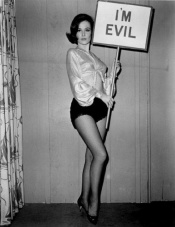Chapter 41
How to Format Entries
Quoted Text
Explanation or analysis of Quoted Text
- Individual opinions or discussion. Sign by writing "~~~", if you like.
To add a page: Type ==Page xx==
Please add entries for each page in the order they appear on the page.
Contents
Page 463
Spuyten Duyvil
Spuyten Duyvil is a neighborhood of the Bronx, New York City, bounded on the north by Riverdale, on the east by Kingsbridge, on the south by the Harlem River, and on the west by the Hudson River, although some consider it to be the southernmost part of Riverdale. The area is named after Spuyten Duyvil Creek, where "Spuyten Duyvil" literally means "Spouting Devil" or Spuitende Duivel in Dutch; a reference to the strong and wild tidal currents found at that location. It may also be translated as "Spewing Devil" or "Spinning Devil", or more loosely as "Devil's Whirlpool" or "Devil's Spate." Spui and spuit are still today commonly used Dutch words involving outlets for water. Historian Reginald Pelham Bolton, however, argues that the phrase means "sprouting meadow", referring to a fresh-water spring. From WIKI.
Page 464
they can hear Elvis-movie music
Chazz is watching Girl Happy (1965), starring Elvis and Shelley Fabares.
It's a scene from the Elvis Presley movie Girl Happy (1965).
See Faberes in action as Elvis sings "The Meanest Girl in Town."
Sillage from the Elvis Hitler song Green Haze mentioned on page 177?
Love will find a way
Pablo Cruise?
Page 467
Peaches & Herb oldie "Reunited and It Feels So Good"
Page 468
Inside the zona
The word Gulag was not often used in Russian — either officially or colloquially; the predominant terms were the camps and the zone, usually singular — for the labor camp system and for the individual camps.
Page 469
Mishpochathon
mishpocha - (Yiddish) the entire family network of relatives by blood or marriage (and sometimes close friends); "she invited the whole mishpocha"
Page 470
what happened to 'corrupt artifact of...' whatever it was?
Page 115. "“I don’t do lunch. Corrupt artifact of late capitalism. Breakfast maybe?"
Page 474
D and D
Done and Done!
Page 475
paraphrasing Cheech & Chong . . . "I woulda shot him, man."
Anyone know what she's paraphrasing? I couldn't figure this out.
set and setting, as Dr. Tim always liked to say...
From WIKI: Set and setting describes the context for psychoactive and particularly psychedelic drug experiences: one's mindset and the setting in which the user has the experience. This is especially relevant for psychedelic or hallucinogenic experiences. The term was coined by Timothy Leary, and became widely accepted by researchers in psychedelic psychotherapy.
Page 476
The Fatty Arbuckle Story
Here are all the "story of" films from the "BPX cable channel, which airs film biographies exclusively" (page 93) I could find. They often come, by the way, with disparaging remarks about Horst. Pynchon telling us something about Horst, the Biography Channel, film biographies and the actors who star in them and the people who watch them, perhaps even, Journey into the Mind of P and those who have seen it, etc?
page 94: Owen Wilson as Jack Nicklaus, Hugh Grant in The Phil Mickelson Story
page 94: Christopher Walken, starring in The Chi Chi Rodriguez Story
page 374: Anthony Hopkins in The Mikhail Baryshnikov Story
page 433: Ben Stiller in The Fred MacMurray Story
page 435: Alec Baldwin in The Ray Milland Story
page 466: The Anton Chekhov Story, starring Edward Norton, with Peter Sarsgaard as Stanislavski
Page 476: Leonardo DiCaprio in “The Fatty Arbuckle Story”
In the book, all the film titles were italicized except the last one, which had quotation marks. Just a slip of the pen?
| Chapter 1 pp. 1-7 |
Chapter 2 pp. 8-19 |
Chapter 3 pp. 20-29 |
Chapter 4 pp. 30-40 |
Chapter 5 pp. 41-52 |
| Chapter 6 pp. 53-67 |
Chapter 7 pp. 68-79 |
Chapter 8 pp. 80-86 |
Chapter 9 pp. 87-95 |
Chapter 10 pp. 96-111 |
| Chapter 11 pp. 112-120 |
Chapter 12 pp. 121-133 |
Chapter 13 pp. 134-144 |
Chapter 14 pp. 145-159 |
Chapter 15 pp. 160-171 |
| Chapter 16 pp. 172-184 |
Chapter 17 pp. 185-197 |
Chapter 18 pp. 198-210 |
Chapter 19 pp. 211-218 |
Chapter 20 pp. 219-229 |
| Chapter 21 pp. 230-238 |
Chapter 22 pp. 239-246 |
Chapter 23 pp. 247-255 |
Chapter 24 pp. 256-264 |
Chapter 25 pp. 265-273 |
| Chapter 26 pp. 274-287 |
Chapter 27 pp. 288-300 |
Chapter 28 pp. 301-313 |
Chapter 29 pp. 314-326 |
Chapter 30 pp. 327-337 |
| Chapter 31 pp. 338-346 |
Chapter 32 pp. 347-353 |
Chapter 33 pp. 354-364 |
Chapter 34 pp. 365-382 |
Chapter 35 pp. 383-394 |
| Chapter 36 pp. 395-407 |
Chapter 37 pp. 408-422 |
Chapter 38 pp. 423-438 |
Chapter 39 pp. 439-447 |
Chapter 40 pp. 448-462 |
| Chapter 41 pp. 463-477 |
